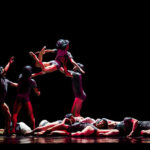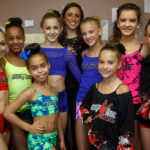Characters dancing adds vibrancy to narratives, from spontaneous kitchen jigs to elaborate ballroom scenes. When writing about these moments, a common question arises: how should the Names Of Dances be styled? Specifically, should they be capitalized? Navigating the nuances of “names of dances” can be tricky, as most style guides offer limited direction. However, by applying logical principles and considering grammatical conventions, we can establish clear guidelines.
When referring to a specific dance with a recognized name, particularly one choreographed to a particular piece of music, treat it as a proper noun. In these instances, capitalization is key. Think of these “names of dances” as titles – they identify a distinct entity. Avoid using quotation marks or italics, as these are not song titles or album names, but rather the names of dances themselves.
Conversely, when discussing a general style of dance that can be performed to various musical pieces sharing a rhythm or tempo, capitalization is unnecessary. These are generic dance categories, not proper nouns. For example, various songs in triple meter can be used for a waltz.
Examples to Clarify Dance Name Capitalization
Let’s explore some examples to solidify the rules surrounding capitalization for “names of dances”:
- “They lined up to perform the Macarena at the wedding reception.” (Macarena is a specific, named dance.)
- “The instructor taught us the Electric Slide to that catchy tune from the 80s.” (Electric Slide is a well-known, choreographed line dance.)
- “She hopes to master the passionate Tango.” (Tango is a distinct, stylized dance with specific steps and character.)
- “For their first dance, they chose a classic Waltz.” (Waltz, in this context, refers to the general style of dance, not a specific named routine, so it’s capitalized as it is often considered a proper noun when referring to the dance style itself.)
- “He enjoys ballroom dancing as a hobby.” (Ballroom dancing is a broad category of dances, therefore lowercase.)
- “They spent the evening salsa dancing at the club.” (Salsa dancing refers to the general style of dance, so lowercase.)
- “The play featured a vibrant scene of hip-hop dancing.” (Hip-hop dancing is a genre of dance, thus lowercase.)
- “Learning ballet requires years of dedication.” (Ballet is a dance form or genre, so lowercase.)
This distinction mirrors how we treat other proper nouns. Just as we capitalize place names (like Paris or New York) and personal names (like Jane or David), we capitalize specific “names of dances” to denote their unique identity. However, general categories like “cities” or “people” remain lowercase.
Thinking about “names of dances” in this way provides a consistent and logical approach. When faced with similar style choices in writing, consider analogous situations. For instance, deciding whether to hyphenate “email marketing” might be guided by the established style for similar compound terms. Consistency is paramount in writing and editing.
While style guides may not explicitly address the capitalization of “names of dances”, applying the principles of proper noun usage offers a sound and practical solution. This approach ensures clarity and consistency in your writing, allowing your readers to focus on the dance itself, rather than being distracted by styling ambiguities.
So, the next time your characters leap onto the dance floor, you’ll be equipped to confidently and correctly write about their chosen “names of dances”.
Image: A diverse group of dancers showcasing different dance styles, highlighting the variety within “names of dances”.


